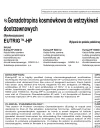Ghoul
Member
We have 2 data points:
Sample...Manufacturer....Excipients.....Reconstitution....30-day degradation
1................Liska.................?................Sterile water.............18.1%
2................QSC..................?.................BAC water................0.9%
Now the question is: Does the BAC water lead to reduced degradation, or the presence of (PH-stabilizing) excipients that may or may not be in the QSC product?
For those who think it's the BAC water: What's the mechanism here? The BAC water prevents the growth of airborne bacteria that otherwise would eat up the peptide hormone? @janoshik, what's your preferred explanation?
Of course BAC water delays degradation. Alcohol is a preservative, IE, creating an environment in which bacteria can not reproduce.
Pharma HGH reconstituted with sterile water is specified for single use, within 24 hours. Reconstituted with BAC it's good for 14 days and multiple uses.
Medicines reconstituted with sterile water are never suitable for multi-dose vials.
It's worth noting if you fail to maintain proper technique when piercing that vial on a daily basis, failing to sterilize the stopper, especially if leaving it exposed in your refrigerator where circulating air will deposit bacteria on it. you'll be introducing more with each puncture, and speed up degradation. It should be kept protected in some container, and allowed to come to room temp before removing the vial so it doesn't collect bacteria laden condensation on it.


